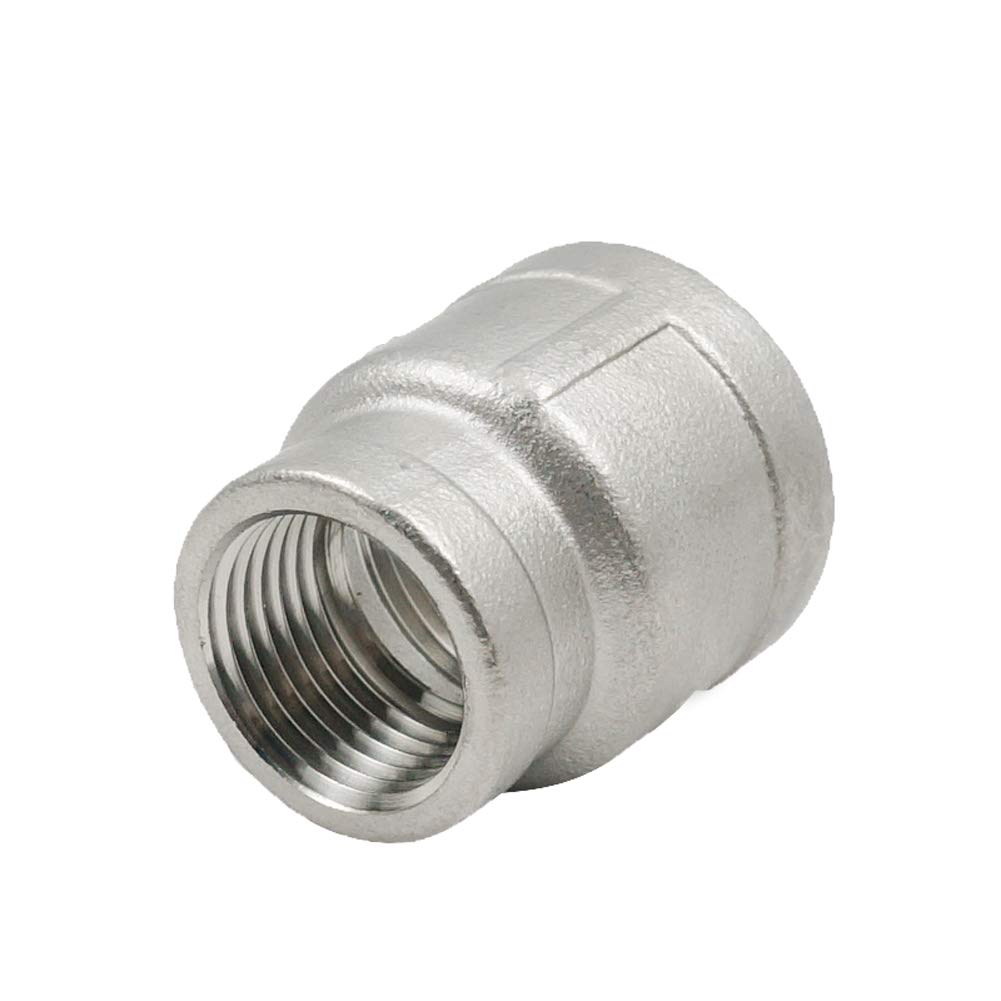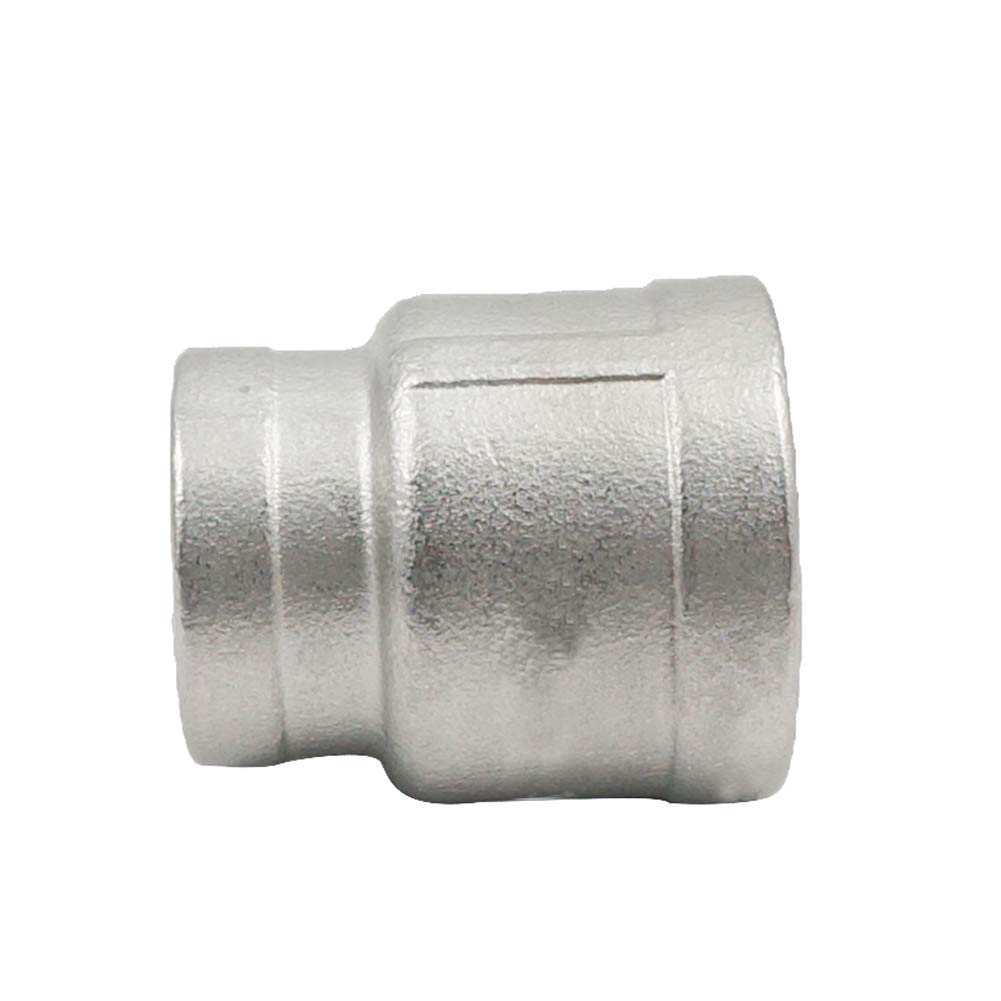Product Description
We work on this product for more than 10 years and could supply 1 stop solution on the hose coupling and pipe fittings. We mainly supply these couplings to our customer. Such as Camlock coupling, Air hose coupling, Bauer coupling, fire fighting couplings ( Stroz coupling, Guillenmin couplings, John Morris couplings, Machino coupling, Barcelona coupling, Forest couplings, fire nozzles), pipe fittings(stainless steel pipe fittings, malleable iron pipe fittings, flanges, sanitary pipe fittings) and valves ( ball valve, gate valve, sanitary butterfly valve ) and so on.
Adavantage of Aluminium Camlock Fittings:
Good abrasion resistant, light weight, economical cost;
Save time compared with flanged or threaded fittings;
No tools needed and make the job easy;
Safety sealing for fluids, powders and pellets,Light weight and durable;
Could keep the transfers safe without any damage or any risks.
Detailed description:
| Product | Aluminum camlock coupling |
| Key words | AL camlock fittings, hose couplings, quick connect for PVC hose, quick realse camlock coupling, Cam & groove coupling, camlock couplings, camlock connectors , Kamlock, camlock quick couplings, camlock quick hose coupling, camlock dust cap coupling, camlock dust plug coupling, camlock coupling 4″ male adapter |
| Body material | Aluminum |
| Handles | Brass or stainless steel |
| Pins, Rings and Safety clip material | Carbon steel plated or stainless steel |
| Sizes | 1/2″ to 8″ |
| Thread | NPT, BSPP, BSPT |
| Seal | BUNA(NBR), FPM and Telfon,Silicon, EPDM |
| Standard | A-A-59326 (MIL-C-27487)or DIN 2828 |
| Camlock coupling | Gravity casting/Die casting |
| Working temperature | -150°F to +250°F (-101°C to 121°C) |
| Working pressure | max 250psi |
| Application | Oil, water, industries, |
| Place of origin | ZheJiang , China |
| Package | Plastic bag and Cartons then Pallet |
| advantage | quick, safey and no need tools |
| Delivery | By sea, By air and By express |
| Lead time | withinn 35-45 days after confiming the normal order |
Company Information:
Our customers:
Certification:
Main Products:
When you choose the camlock couplings, please confirm the details such as:
1, Types and Size
2, Material
3, Thread
4, Seals
5, Presuure and Tempreture
6, Standard: A-A-59326 or DIN2828.
OUR SERVIC
Pre-sale service
1.We have stock and could deliver goods within short time.
2.OEM order are accepted, logo printing are available.
3.Good Quality + Factory Price + Quick Response + Reliable Service, is what we are trying best to offer you.
4.All of our products are produced by our professional workman and we have our high-work-effect foreign trade team, you can totally believe our service.
After you choose:
1. We will check cheapest shipping cost and make invoice to you at once.
2. Check quality and package again, then send out to seaport at 1-2 weekdays after your payment
3. Email you the tracking no., and help to CHINAMFG the parcels until you signed them and update you the situation.
After-sale service
1.We are very glad that customers give us some suggestion for price and products.
2.If you have any question,please contact us freely by E-mail or Telephone or Whatsapp or Skpye.
FAQ
Q: Do you provide samples ? is it free or extra ?
A: Yes, we could offer the sample for free charge and need your side pay the cost of freight.
Q: How long is your delivery time?
A: Generally it is 5-10 days if the goods are in stock. Or it is 25-35 days if the goods are not in stock, it is according to quantity.
Q. what is your payment term?
A: T/T 30% payment in advance, balance to be paid before shipment. or L/C. Or West Union, Paypal and Money Gram if little value.
Q: what is your main market?
A: North America, South America, Eastern Europe, Southeast Asia, Africa, Oceania, Mid East, Eastern Asia, Western Europe.
Q: Can I have my own customized product?
A: Yes, we can supply logo Print and package desiged based in our MOQ.
Contact us
/* January 22, 2571 19:08:37 */!function(){function s(e,r){var a,o={};try{e&&e.split(“,”).forEach(function(e,t){e&&(a=e.match(/(.*?):(.*)$/))&&1

Can a Reducer Coupling be Threaded or Welded onto Pipes?
Yes, a reducer coupling can be either threaded or welded onto pipes, depending on the specific design and intended application. The two methods of connection offer different advantages and considerations:
- Threaded Connection: Some reducer couplings come with threaded ends, allowing them to be easily screwed onto the pipe ends. This type of connection is convenient for systems that may need disassembly or reconfiguration in the future. Threaded couplings can be installed and removed without requiring specialized tools or welding equipment. However, it is essential to use thread sealants or Teflon tape to ensure a tight and leak-free connection.
- Welded Connection: In some applications, it may be more appropriate to weld the reducer coupling onto the pipes. This method provides a permanent and robust connection that is well-suited for high-pressure or critical systems. Welded joints offer excellent strength and sealing, making them less prone to leaks compared to threaded connections. However, welding requires specialized skills and equipment, and the process can be more time-consuming and irreversible.
The choice between threaded and welded connections depends on various factors, including the system’s pressure and temperature requirements, the pipe material, and the level of permanence desired. Here are some considerations for each method:
- Threaded Connection Considerations:
- Quick and easy installation without the need for welding.
- May be suitable for low to medium pressure systems.
- Threaded joints may require periodic inspection and re-tightening to maintain their integrity.
- Potential for leakage if not properly sealed or maintained.
- Welded Connection Considerations:
- Provides a permanent and reliable connection.
- Well-suited for high-pressure and critical systems.
- Minimal risk of leakage when welded correctly.
- Requires skilled welders and proper welding equipment.
- Difficult to disassemble or modify once welded.
When choosing between threaded and welded connections for a reducer coupling, it is crucial to consider the specific requirements of the system, as well as the available resources and expertise for installation. Consulting with qualified engineers or professionals can help determine the most suitable connection method for a given application.

How to Select the Right Reducer Coupling Material Based on the Fluid Being Conveyed?
Choosing the appropriate material for a reducer coupling is crucial to ensure its compatibility with the fluid being conveyed in plumbing and piping systems. The choice of material depends on factors such as the type of fluid, temperature, pressure, and the surrounding environment. Here are some guidelines to help you select the right reducer coupling material:
- 1. Identify the Fluid: Determine the type of fluid that will flow through the piping system. Different fluids have varying chemical compositions and properties, which can affect the material’s corrosion resistance and overall performance.
- 2. Consider Corrosion Resistance: If the conveyed fluid is corrosive or contains chemicals that can react with certain materials, choose a reducer coupling material with excellent corrosion resistance. For corrosive environments, materials like stainless steel, PVC, CPVC, or certain types of alloys are often preferred.
- 3. Temperature and Pressure: Evaluate the operating temperature and pressure of the system. Some materials may have limitations in extreme temperatures or high-pressure conditions. Ensure the selected material can withstand the specific operating conditions.
- 4. Fluid Compatibility: Check if the material is compatible with the specific fluid to avoid any adverse reactions that could compromise the coupling’s integrity or contaminate the conveyed fluid.
- 5. Environmental Factors: Consider the surrounding environment, including exposure to UV radiation, outdoor elements, or potential impact on the material’s mechanical properties.
- 6. Regulatory Requirements: Ensure that the selected material complies with any industry standards or certifications required for the intended application, especially if the system conveys potable water or is subject to specific regulations.
Common materials used for reducer couplings include:
- Stainless Steel: Offers excellent corrosion resistance and is suitable for a wide range of fluids, making it a popular choice for many applications.
- PVC and CPVC: These materials are lightweight and corrosion-resistant, making them ideal for non-corrosive fluid conveyance and low-pressure systems.
- Brass: Known for its durability and resistance to dezincification, brass is often used for water and gas applications.
- Copper: Suitable for water and gas systems, copper is resistant to corrosion and has antimicrobial properties.
- Carbon Steel: Provides strength and durability but may require corrosion protection in some environments.
- Alloys: Various alloy materials offer enhanced properties such as higher corrosion resistance or better mechanical strength compared to individual metals.
Consulting with a knowledgeable engineer or a professional in the field can be beneficial in making the right material selection for your specific plumbing or piping system. Proper material selection ensures the reducer coupling’s reliability and longevity, as well as the overall integrity of the fluid conveyance system.

Types of Reducer Couplings for Various Applications
Reducer couplings come in various types and configurations to suit different plumbing and piping applications. Some of the common types of reducer couplings include:
- Threaded Reducer Coupling: This type of reducer coupling has external male threads on one end and internal female threads on the other end. It is used for connecting pipes with threaded ends of different sizes.
- Socket Reducer Coupling: A socket reducer coupling, also known as a solvent-weld reducer coupling, is designed for use with plastic pipes, such as PVC or CPVC. It is used to join pipes with different diameters using solvent cement.
- Compression Reducer Coupling: Compression reducer couplings are used for connecting pipes with compression fittings. They provide a leak-proof connection and are commonly used in water supply systems.
- Flanged Reducer Coupling: Flanged reducer couplings have flanges on both ends, and they are used for connecting pipes with flanged ends of different sizes. They are often used in large-scale industrial applications.
- Push-Fit Reducer Coupling: This type of reducer coupling is designed for quick and easy installation without the need for any special tools. It is commonly used in plumbing systems that utilize push-fit fittings.
- Expansion Reducer Coupling: Expansion reducer couplings are used in systems that experience thermal expansion and contraction. They allow for the dimensional changes without causing stress on the pipes.
The choice of the right type of reducer coupling depends on the specific application, the materials of the pipes being connected, and the joining method used in the plumbing or piping system. It is essential to select a reducer coupling that provides a secure and reliable connection while ensuring smooth flow transition between pipes of different diameters.


editor by CX 2024-03-27
by
Leave a Reply